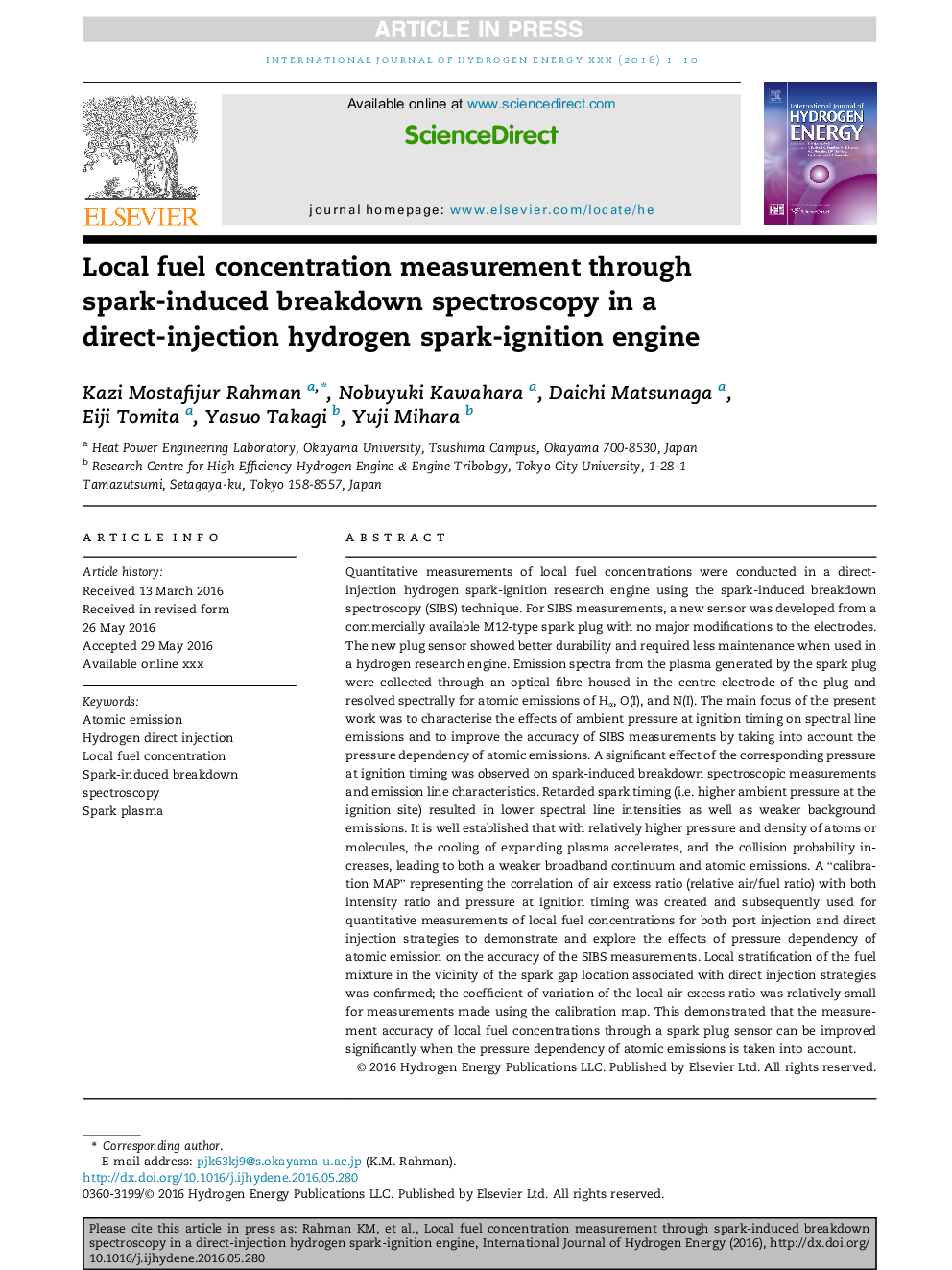| Article ID | Journal | Published Year | Pages | File Type |
|---|---|---|---|---|
| 7709893 | International Journal of Hydrogen Energy | 2016 | 10 Pages |
Abstract
Quantitative measurements of local fuel concentrations were conducted in a direct-injection hydrogen spark-ignition research engine using the spark-induced breakdown spectroscopy (SIBS) technique. For SIBS measurements, a new sensor was developed from a commercially available M12-type spark plug with no major modifications to the electrodes. The new plug sensor showed better durability and required less maintenance when used in a hydrogen research engine. Emission spectra from the plasma generated by the spark plug were collected through an optical fibre housed in the centre electrode of the plug and resolved spectrally for atomic emissions of Hα, O(I), and N(I). The main focus of the present work was to characterise the effects of ambient pressure at ignition timing on spectral line emissions and to improve the accuracy of SIBS measurements by taking into account the pressure dependency of atomic emissions. A significant effect of the corresponding pressure at ignition timing was observed on spark-induced breakdown spectroscopic measurements and emission line characteristics. Retarded spark timing (i.e. higher ambient pressure at the ignition site) resulted in lower spectral line intensities as well as weaker background emissions. It is well established that with relatively higher pressure and density of atoms or molecules, the cooling of expanding plasma accelerates, and the collision probability increases, leading to both a weaker broadband continuum and atomic emissions. A “calibration MAP” representing the correlation of air excess ratio (relative air/fuel ratio) with both intensity ratio and pressure at ignition timing was created and subsequently used for quantitative measurements of local fuel concentrations for both port injection and direct injection strategies to demonstrate and explore the effects of pressure dependency of atomic emission on the accuracy of the SIBS measurements. Local stratification of the fuel mixture in the vicinity of the spark gap location associated with direct injection strategies was confirmed; the coefficient of variation of the local air excess ratio was relatively small for measurements made using the calibration map. This demonstrated that the measurement accuracy of local fuel concentrations through a spark plug sensor can be improved significantly when the pressure dependency of atomic emissions is taken into account.
Related Topics
Physical Sciences and Engineering
Chemistry
Electrochemistry
Authors
Kazi Mostafijur Rahman, Nobuyuki Kawahara, Daichi Matsunaga, Eiji Tomita, Yasuo Takagi, Yuji Mihara,
